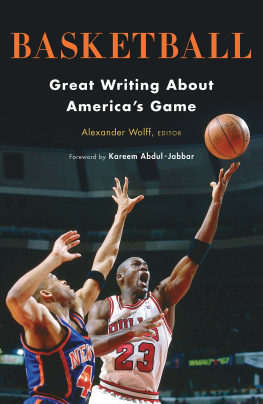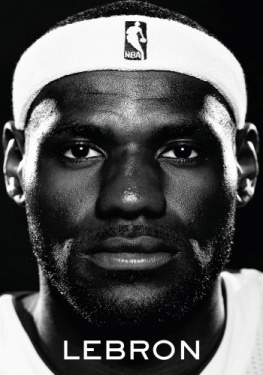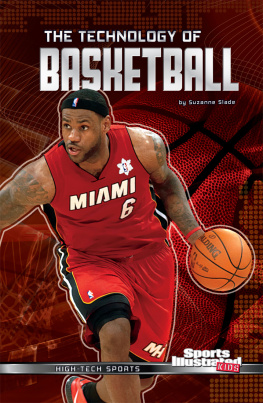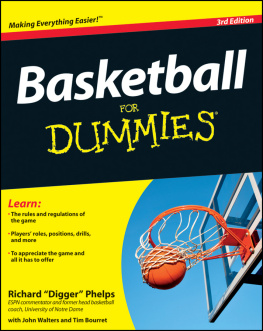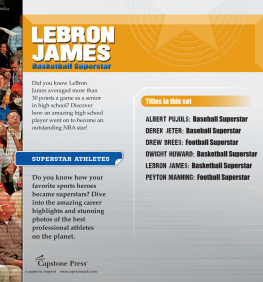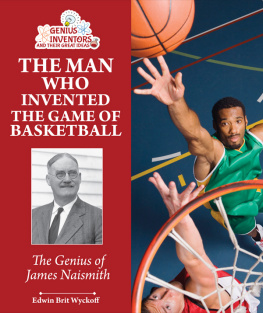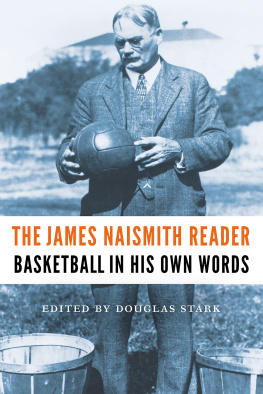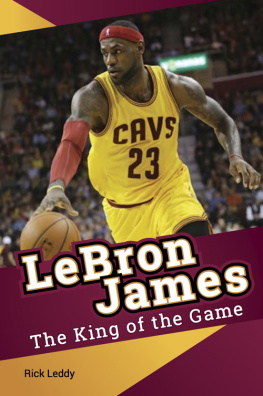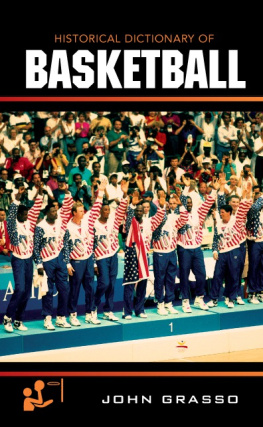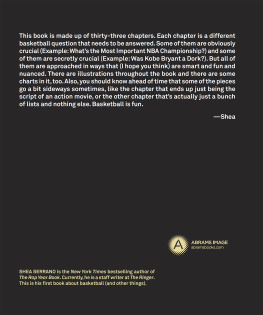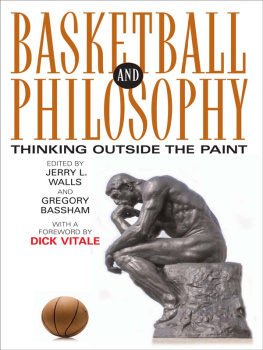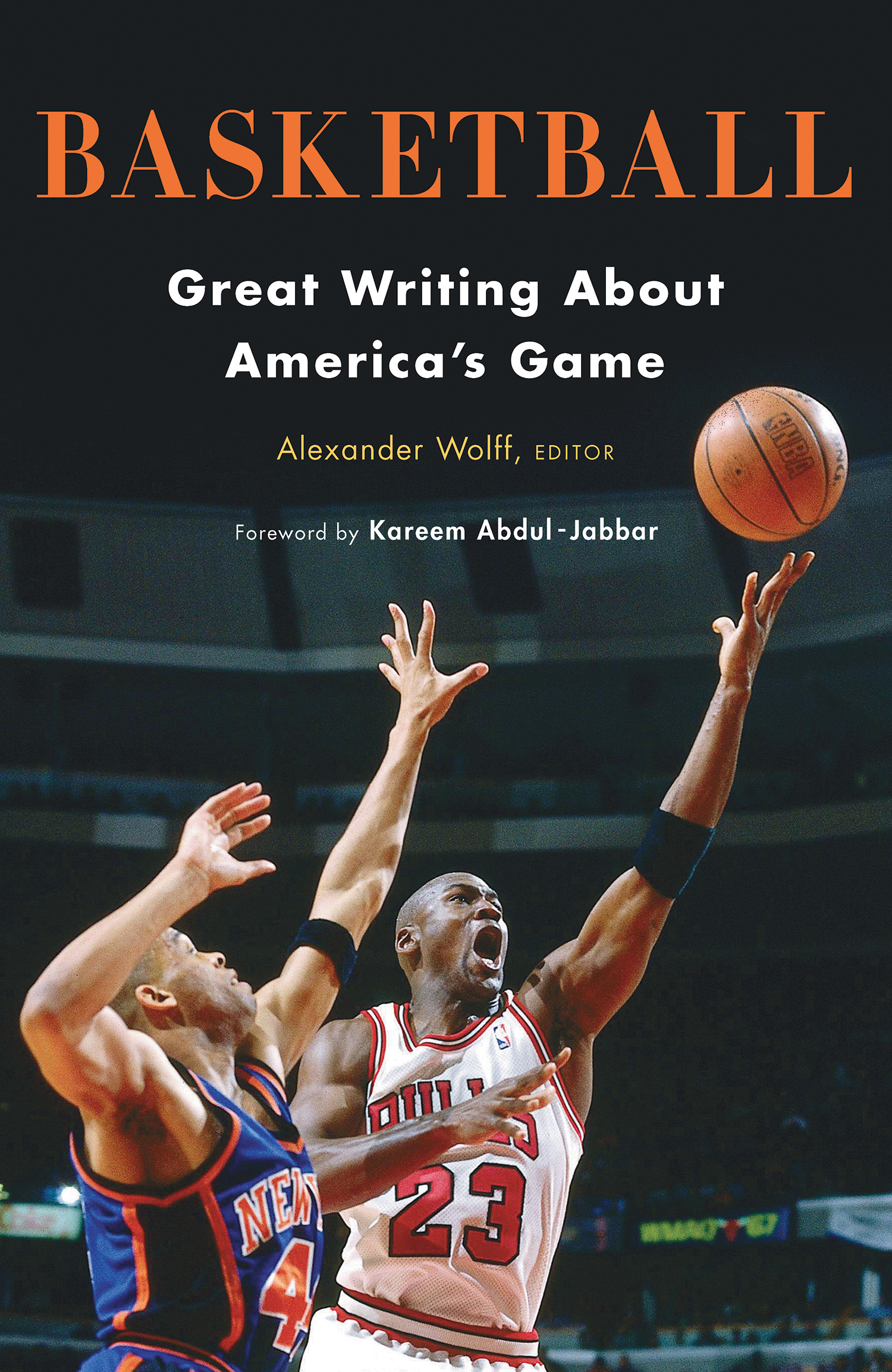BASKETBALL
Great Writing About Americas Game
Alexander Wolff, EDITOR
WITH A FOREWORD BY
Kareem Abdul-Jabbar

THE LIBRARY OF AMERICA
Foreword, Introduction, headnotes, and volume compilation copyright 2018 by Literary Classics of the United States, Inc., New York, N.Y.
All rights reserved.
No part of this book may be reproduced in any manner whatsoever without the permission of the publisher, except in the case of brief quotations embodied in critical articles and reviews.
Published in the United States by Library of America.
LIBRARY OF AMERICA, a nonprofit publisher, is dedicated to publishing, and keeping in print, authoritative editions of Americas best and most significant writing. Each year the Library adds new volumes to its collection of essential works by Americas foremost novelists, poets, essayists, journalists, and statesmen.
Visit our website at www.loa.org to find out more about Library of America, including our signature black-jacketed series, Paperback Classics, and American Poets Project; and to sign up to receive our occasional newsletter with exclusive interviews with Library of America authors and editors, and our popular Story of the Week e-mails.
Some of the material in this volume is reprinted with the permission of holders of copyright and publishing rights..
Distributed to the trade in the United States by Penguin Random House Inc. and in Canada by Penguin Random House Canada Ltd.
Library of Congress Control Number: 2017951244
e- ISBN 9781598535648
Manufactured in the United States of America
Contents
Foreword
by Kareem Abdul-Jabbar
T WO WOODEN PEACH BASKETS . A heavy leather soccer ball. Two nine-man teams. No dribbling allowed. No running with the ball.
That was the basic setup for the first basketball game played on December 21, 1891, when the games inventor, Dr. James Naismith, asked his gym class students to try something new, a safer alternative to injury-prone football. One of Naismiths students reacted with an unenthusiastic Huh! Another new game! But they played their two fifteen-minute halves with a five-minute break between, finishing with a resounding 10 score. It was just as well that the game was low-scoring considering that the peach basket still had its bottom intact, so after a basket was made the janitor had to climb up on a ladder and get the ball down.
Huh, indeed!
An inauspicious beginning for one of the worlds most popular sports. With over one billion fans worldwide, basketball is second only to soccer in having the largest number of professional teams and is the fastest growing sport in the world. One reason for its popularity is its simplicity. Basketball is one of the few major sports that you can play with a team or by yourself. All you need is a hoop and a ball. Thats why there are small basketball hoops on the backs of the doors of so many bedrooms, dorm rooms, and office rooms, and so many balled-up pieces of paper around wastebaskets.
As a child, I was more interested in baseball. However, my height and encouragement from the basketball coach brought me out on the court to give it a try. At first, I was a lousy player, all arms and legs and very little coordination. I moved like a daddy longlegs spider on roller skates. But the more I played, the more the game became an integral part of me. It was no longer just something I did, it was how I saw myself as an individual and how I saw myself as part of my peers.
Growing up in Catholic schools, I was one of only two or three black kids in the entire student population. This was during the 1950s and 1960s, when America was going through a tumultuous political upheaval. Atrocities against African Americans were being broadcast on the nightly news and the black community responded with protests in the streets, some nonviolent, others descending into riots. I was just a school kid trying to figure out where I stood in all this turmoil. At school, the white kids were also trying to figure where I stood.
Playing for the school teams from middle school through high school was one way I was able to demonstrate that, while I was well aware of the social inequities and was outspoken about them, I was still a loyal part of the school itself. Being part of a team was important to me because I learned how to work with others so that we all could be successful together. It was satisfying to me as a player, but it was also satisfying to me as an African American to show us all working in harmony.
Also, the better I played as an individual, the more of a statement I was making about the negative stereotypes about blacks that were prevalent at that time. When a hook shot soared over an opponent and swished through the basket, I felt like Id scored for all blacks. See what we can do if given a chance? I was saying. Sure, there were plenty of successful black athletes out there, but each addition to their ranks made the statement even bolder. I was determined to join in that statement with each game.
Basketball gave me the confidence to speak out and it gave me the platform to be heard. And, while the sport helped forge my personal and social values, it was never just about making a statement. There was also the pure joy of the game. When ten players are on the court, hustling, sweating, passing, muscling, looking for a shot, the outside world fades away to a distant thrum. There is only your training, your will, and your trust in your teammates. You feel it deep inside in a way that defies description.
Thats where writers come in. Writing about basketball isnt just about showing enthusiasm for the game, its also about understanding the elegance of the sport, the chesslike intricacies of the gameplans, the emotional impact on the fans, and what it says about the society that heralds it. This definitive collection includes some of the most famous sportswriters, players, aficionados, and enthusiasts the sport of basketball has ever known. And they get it right.
Whether you already love basketball or youre just wondering what the fuss is all about, this book will give you insights into all aspects of the game, from personal experiences playing and coaching to the joys and frustrations of being a fan to the relevance of the sport in our culture.
And you dont even have to work up a sweat.
Introduction
by Alexander Wolff
February Reconsidered
G EORGE PLIMPTON was the embodiment of the literary sportswriter, respected equally in the saloon and the salon. Perhaps that explains why his Small Ball Theory has hung like a shroud over writing about Americas homegrown sport. The smaller the ball, the more formidable the literature, Plimpton wrote in 1992. There are superb books about golf, very good books about baseball, not many good books about football or soccer, very few good books about basketball and no good books about beach balls.
In his slight regard for basketball writing, Plimpton had company. Theres only one basketball story among the fifty-nine pieces in the 1999 collection The Best American Sports Writing of the Century. ( on page 150.) Decades before that, after he left sports to write novels, New York Daily News columnist Paul Gallico was asked why. February, Gallico repliednot fingering basketball explicitly, but delivering an indictment by association just the same.
Consider this collection a rebuttal, as well as an updated survey of a basketball bibliography that, a quarter century after Plimptons pronouncement, can stand unapologetically tall. His theory couldnt yet account for such books set far from the spotlight as Darcy Freys

